|
Jan
20
2025
|
|
Posted 336 days ago ago by Admin
|
|
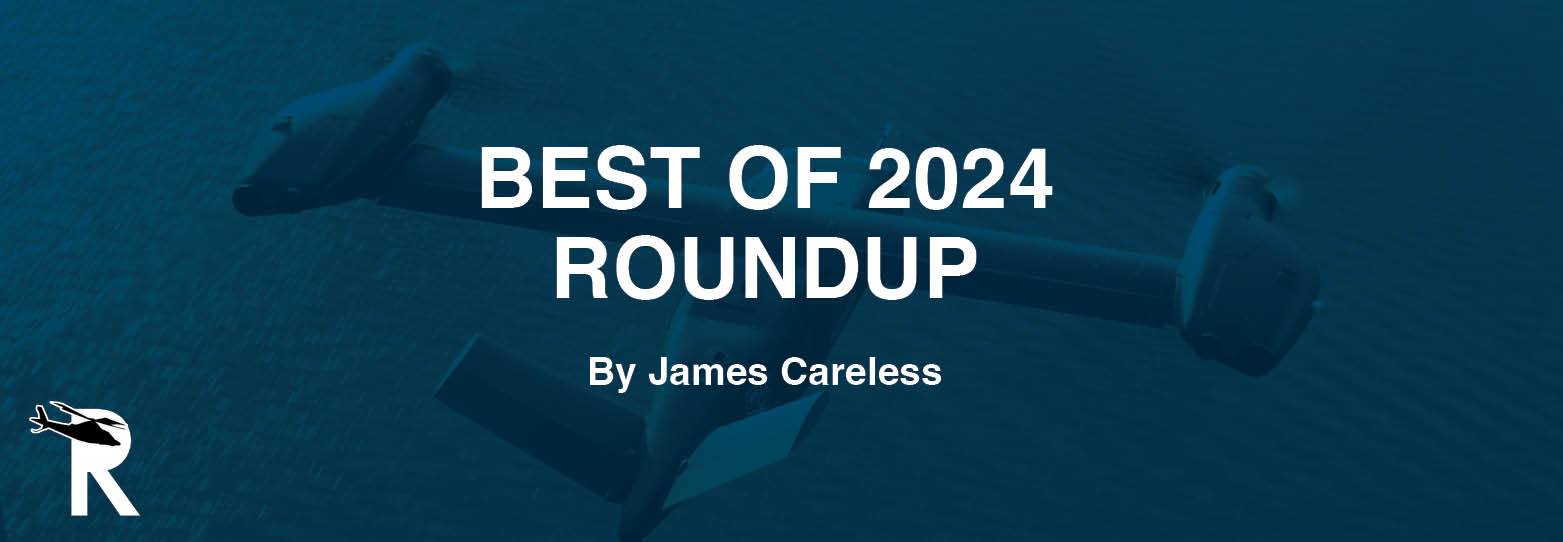
This past year was a banner year for innovation in the rotor industry, with all kinds of exciting and new ideas moving from thought to physical reality. Here are some of the most stunning projects that crossed our desks this year!
EASA Authorizes Loft Dynamics H125 FSTD for Full Flight Training
In a move that signals just how far computer-driven flight training has come, the European Union Aviation Safety Agency (EASA) has updated to its Aircrew Regulation (EU) No 1178/2011 to allow Loft Dynamics’ VR (virtual reality) H125 FSTD (flight simulation training device) to be used for all aspects of helicopter flight training and checking. Prior to this change, EASA required the use of full flight simulators (FFS) for helicopter training, skills tests and proficiency checks, with actual helicopters being the last-resort option due to safety risks.
According to the company, Loft Dynamics is the only Airbus approved training device in the world and is now the most extensively qualified H125 FSTD in Europe. Beyond using VR headsets, the Loft Dynamics H125 FSTD has a physical replica cockpit that the pilot interacts with the controls and responses shown in the VR display and a moving chair base to simulate flight motion and angles. The result is an authentic helicopter flight experience at a much lower acquisition, installation, and operational cost.
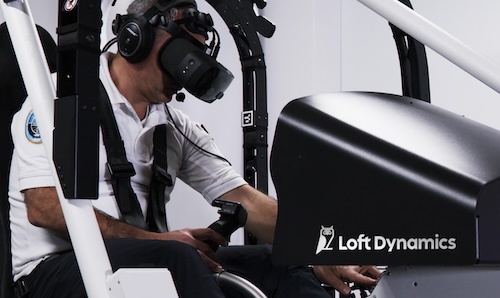
“I started with a dream 10 years ago to make flight training affordable and accessible,” said Fabi Riesen, CEO and co-founder of Loft Dynamics. “Thanks to the H125 FSTD, pilots don't have to travel to Zurich or Helsinki or wherever an FFS simulator is available and make their checkrides. They can do it close to home using our FSTD, at a much lower cost in money and time. As well, with one-third of all helicopter accidents occurring during training and checking, there is an urgent need for more practical and safer training solutions. EASA’s updated regulations demonstrate a commitment to improving pilot training safety and accessibility through innovation, including the use of our H125 FSTD.”
Skyryse Receives FAA Certificate for its Skyryse One Helicopter
The days of flying a helicopter as easily as an aircraft using a single control stick came closer on 3 October 2024, when the FAA issued a Special Airworthiness Certificate for Skyryse One, a Robinson R66 helicopter equipped with the company’s SkyOS universal flight operating system and associated avionics. According to the company, this FAA certification unlocks the next step of work with the FAA to obtain approval and certification of the Skyryse One aircraft.
“SkyOS is the world's first aircraft agnostic operating system,” said Ray Wert, Skyruse’s VP of Communications. “It is a triply redundant, fly by wire control system that can be utilized on any aircraft, whether it be a rotorcraft, fixed-wing, or eVTOL. We have chosen the Robinson R66 as our first platform because it is relatively simple, it's easy to customize, it's a good platform to utilize and it's got a bulletproof Rolls-Royce engine.”
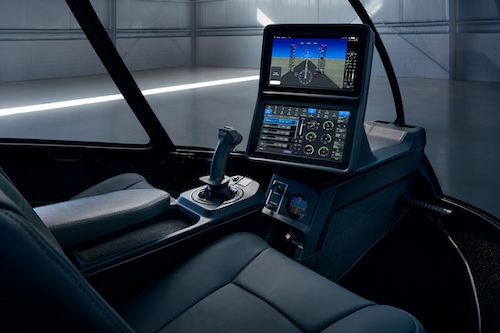
To convert the R66 into Skyryse One, “we've removed all of the mechanical controls and replaced them with our own fly by wire system and flight simplified controls, which include a single control stick and two touch screens providing a full control and a high level of automation to the helicopter. This makes it simpler and safer to fly.” The Skyryse system even offers an automated autorotation landing mode, he added. Going forward, “our plan is to receive our certification of our STC and to begin deliveries in 2025.”
Aurora Flight Sciences’ Drone Flies Seven Hours on Hydrogen
In a bid to continuously increase flight times, Aurora Flight Sciences, a Boeing company, flew its SKIRON-XLE hydrogen fuel-cell-powered small UAS (uncrewed aircraft system) for seven hours straight on 14 August 2024. The test flight, which was held at an airfield in Virginia, used the SKIRON-XLE hybrid eVTOL platform, which combines vertical takeoff and landing with fixed-wing forward flight. The SKIRON-XLE complies with U.S. FAA Part 107 regulations for sUAS operations and is beyond-visual-line-of-sight (BVLOS) ready.
To stay aloft for seven hours, the SKIRON-XLE system carried two five-liter hydrogen tanks, an Intelligent Energy fuel cell, a Trillium HD45 EO/IR camera payload, and a lithium polymer (LiPo) auxiliary battery. Its takeoff weight was 54 pounds. At the end of the flight test, the SKIRON-XLE sUAS landed with empty hydrogen fuel tanks but with an ample safety margin remaining on the battery.
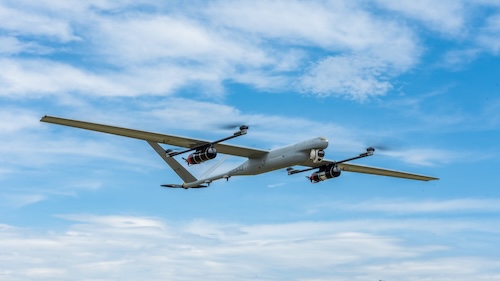
“SKIRON-XLE opens the door to long-endurance flight with a clean, quiet, and user-friendly uncrewed aircraft system,” said Jason Grzywna, senior director of products with Aurora Flight Sciences. “SKIRON-XLE offers the ability to replace gas-powered sUAS while still delivering the long flight times that customers want. In early 2025, Aurora expects to deliver the first customer units of SKIRON-XLE while continuing to further extend flight times for both fuel-cell and battery-only configurations.”
Bell Achieves Major Milestone in U.S. Army’s FLRAA Program
In August 2024, Bell Textron Inc., a Textron Inc. company, announced that the United States Army has approved the Milestone B decision for the Future Long Range Assault Aircraft (FLRAA), marking the beginning of this weapon system’s program of record (PoR). Two years earlier, the Army selected the Bell Textron V-280 Valor powered by Rolls-Royce engines as the winner of the FLRAA contract. The FLRAA program represents the largest step in a new direction in 40 years for the Army's vertical-lift capability.
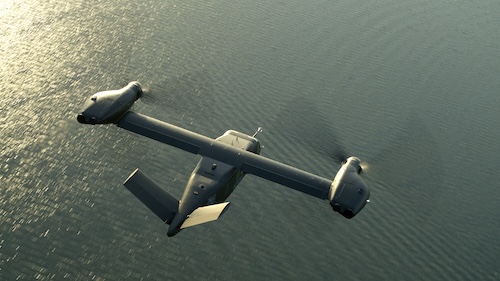
“The U.S. Army’s new long-range assault aircraft will fly twice as far and twice as fast as the current fleet,” said Jeff Schloesser, Bell's executive vice president of strategic pursuits. “By utilizing mature tiltrotor technology coupled with an innovative digital engineering approach and an open architecture, it will be the most reliable, affordable and high-performing long-range assault aircraft in the world.”
GoAERO Offers $2 Million in Prizes for Autonomous Rescue Aircraft
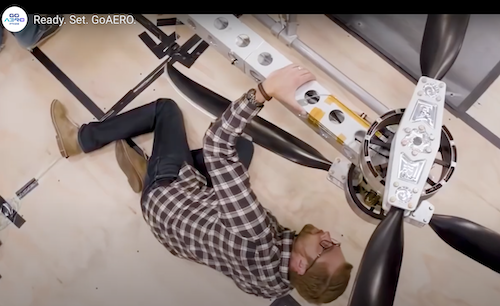
VIEW VIDEO
One of the most exciting concepts associated with autonomous aircraft is the notion that one could be dispatched to someone needing a remote rescue, so that they could fly themselves to safety. Fostering such a capability is the thinking behind the GoAERO (Aerial Emergency Response Operations) Prize Competition. Accessible online at www.goaeroprize.com, the GeAERO competition awards a total of $2 million in prizes over three years to autonomous aircraft development teams.
“Along with partners such as Boeing, NASA, RTX, and Honeywell, plus a myriad of organizations worldwide, GoAERO has created this competition to drive the development of autonomous emergency response flyers," said GoAERO CEO Gwen Lighter. These flyers are meant to be less expensive and easier to operate than helicopters, but with far more useful capacity than drones currently provide. “What we're looking for are emergency response aircraft that sit between helicopters and drones," she said.
The prizes associated with the GoAERO competition will be divided across three phases: design, a working prototype, and a final fly-off when the competing aircraft perform the necessary tasks associated with the self-rescue concept.
“We are still accepting new teams, and we need the best and the brightest to join us to save lives,” Lighter said. “If you are even remotely interested, I would encourage you to go to our website at www.goaeroprize.com, and join us to form a team, as a sponsor, or as a mentor. There's so many different ways to get involved, and we're hoping that everyone interested just reaches out to us.”
Joby Aviation Pushes Ahead with Electric Air Taxis
Joby Aviation’s six rotable-engine eVTOL air taxis continued their march towards service in 2024. “We have now rolled three production prototype aircraft off our production line in Marina, California, with a fourth nearly complete and set to join our active flight test program soon,” said Greg Bowles, Joby’s Head of Government Policy. In 2024, we reached an important milestone on our journey to type certification with the completion of our first major subassembly intended to be used in for-credit testing. We continued our momentum toward type certification, with more Stage 4 documents both submitted and accepted by the FAA than during any previous quarter.”
That’s not all: In 2024, Joby completed the first international demonstration flights of its eVTOL air taxi at Toyota’s Higashi-Fuji Technical Center in Japan. “The flights marked an opportunity to demonstrate the low acoustic footprint of our aircraft and welcome guests from a wide range of stakeholders, including Japan’s civil aviation authority,” Bowles said. “In October, Joby deepened our partnership with Toyota with $500 million committed and plans to establish a manufacturing alliance to support the first phase of commercialization. The funds, subject to closing conditions, will bring Toyota Motor Corporation’s total investment in Joby to $894 million.”
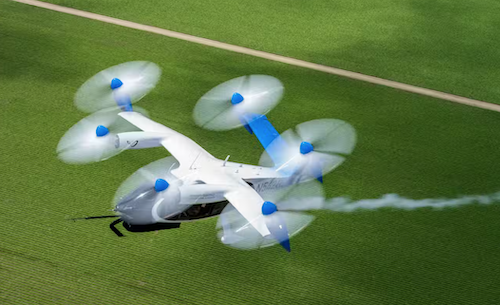
Also, in September 2024, Joby flew a first of its kind hydrogen-electric air taxi demonstrator for 523 miles, with water as the only by-product. “The aircraft, which takes off and lands vertically, builds on Joby’s successful battery-electric air taxi development program, and demonstrates the potential for hydrogen to unlock emissions-free, regional journeys that don’t require a runway,” said Bowles. Finally, Joby acquired the autonomy division of Xwing Inc., which has been flying autonomous aircraft since 2020 using the Superpilot software it has developed in-house.
Wingcopter Make Progress Towards Drone-Based Deliveries
Wingcopter — maker of the Wingcopter 198 cargo-carrying drone with a payload rated at 4.7 kg (10.3 pounds) a range of 94 km (48 miles) and a speed of 90 kph (56 mph) — made significant progress towards commercialization in 2024. “We have successfully completed a six-months grocery delivery project in Germany, the first of its kind, in which we delivered everyday goods to two villages in the rural Odenwald region,” said company spokesperson Thomas Dreiling. “In this project we have shown that we can fly BVLOS without any problems in open airspace that we shared with general aviation as well as emergency helicopters. Communication with all airspace participants worked without any incident.”
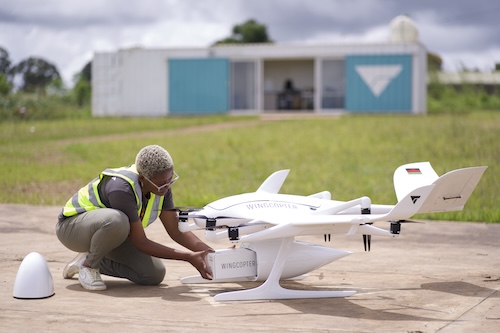
It’s worth noting that in June 2024, Wingcopter’s Japanese partner ITOCHU conducted the first-ever BVLOS drone flight across Uchiura Bay in Hokkaido. “This round-trip flight with our Wingcopter 198 covered a total distance of 96 km (60 miles) above the open sea between Muroran City and Mori Town, delivering medical equipment, including catheters for the treatment of brain strokes, and returning with Mori Town's local specialty: vacuum-packed squid rice,” Dreiling said. “The flight reduced the transportation time from over two hours by car to around 28 minutes with the Wingcopter drone. Currently, we are preparing a project in Kenya together with Siemens Healthineers to speed up the picking up and the delivery of laboratory samples from remote health facilities to central laboratories. First test flights have already taken place.”
“In thousands of flight hours, we have conducted extended performance and endurance flight tests at our testing facilities in Germany, Spain and Malawi throughout the year,” he added. “One of the most remarkable tests has proven the Wingcopter’s capability to fly in heavy wind of up to 18 meters/second [40 mph]. We think our Wingcopter drones can complement, and in certain scenarios, replace helicopters and road-based transport.. This involves scenarios like the delivery of urgently needed medical supplies such as blood, deliveries to oilrigs or offshore wind parks, and long-range inspections.”
READ MORE ROTOR PRO: https://justhelicopters.com/Magazine
WATCH ROTOR PRO YOUTUBE CHANNEL: https://buff.ly/3Md0T3y
You can also find us on
Instagram - https://www.instagram.com/rotorpro1
Facebook - https://www.facebook.com/rotorpro1
Twitter - https://twitter.com/justhelicopters
LinkedIn - https://www.linkedin.com/company/rotorpro1